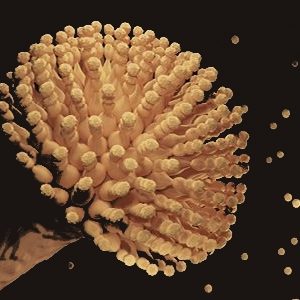The main target organs of aflatoxins are liver and kidney.
 17 Jul 2020
17 Jul 2020
What happens when people or cows are exposed to aflatoxins? What is the role of AFM1 in human aflatoxicosis? How can mycotoxin binders help to reduce the impact of aflatoxins? This article addresses these questions from a very practical point of view.
When animals or people are offered food contaminated with aflatoxin, we are facing a major challenge to food safety: the occurrence of aflatoxicosis. Its course and severity depends on the dose ingested, the time of exposure, affected species, age of the animal, sexual cycle, nutritional state, etc.
The main target organs of aflatoxins are liver and kidney.
Their main toxic and carcinogenic effects are:

Figure 1. Hepatic lesions associated with aflatoxicosis
The main observed signs are:
We need to consider the following points to evaluate what we know and what we still need to learn about this problem. We know that:
Carryover rate of aflatoxin = Percentage of AFB1 excreted in milk as metabolite AFM1.
The carryover rate varies between 1-3% (min. 0,1% y max. 10%) and depends on:
To counteract the effect of an AFB1 challenge at the farm and reduce the AFM1 carryover in milk, mycotoxin binders should be used.
The Commission Regulation (EC) No. 386/2009, defines these additives as products that reduce mycotoxin contamination in animal feed by “suppressing or reducing the absorption, promoting the excretion of mycotoxins or modifying their mode of action”
A mycotoxin binder should:
Mycotoxin binders fall into the category 1m558, (Technological aditives) specified in Rules of Execution (UE) No. 160/2013. The only mechanism of action recognized in this document is “reducers of feed contamination by mycotoxins: aflatoxin B1”. It is specified that, in this category, the ONLY mycotoxin binder authorized in the EU is bentonite. This bentonite should fulfil very specific and restrictive conditions. Bentonites not achieving these criteria, are classified as additives 1m558i
Withdraw the feed from lactating cows and, if the feed is not excessively contaminated, recycle it giving it to heifers.![]()
Take reliable samples and send them rapidly to the lab for analysis the objective is to know as soon as possible which one(s) is (are) the contaminated ingredient(s). Repidly analyse maize and other suspected ingredients with rapid tests (“immediate” response), and later confirm with HPLC.
If posible, treat the contaminated feed with a mycotoxin binder. Add 100-150 g (depending on the recommendation of the technical advisor) a binder of guaranteed efficacy (properly chosen). Wait for 1-4 milkings (depending on the initial level) before the milk can be consumed again.
![]() Is maize contaminated?
Is maize contaminated?
Also analyse cotton, soya, and maize silage (acetone+HPLC tests)
Is cotton contaminated? Discard it
Is maize silage contaminated? Treat it witht toxin binder (if possible), and feed and/or replace it for other alternatives (pasture silage, cereal silages, etc.)
To remember:
This article has previously published in agriNews Spanish version, as “De Aflatoxina B1 a Aflatoxina M1, ¿qué ocurre?“
Subscribe now to the technical magazine of animal nutrition
AUTHORS

Nutritional Interventions to Improve Fertility in Male Broiler Breeders
Edgar Oviedo
The Use of Organic Acids in Poultry: A Natural Path to Health and Productivity
M. Naeem
Synergistic Benefits of Prebiotics and Probiotics in Poultry, Swine, and Cattle
Gustavo Adolfo Quintana-Ospina
Hybrid Rye Potential in Laying Hen Feed Rations
Gwendolyn Jones
A day in the life of phosphorus in pigs: Part I
Rafael Duran Giménez-Rico
Use of enzymes in diets for ruminants
Braulio de la Calle Campos
Minerals and Hoof Health in the Pregnant Sow
Juan Gabriel Espino
Impact of Oxidized Fats on Swine Reproduction and Offspring
Maria Alejandra Perez Alvarado